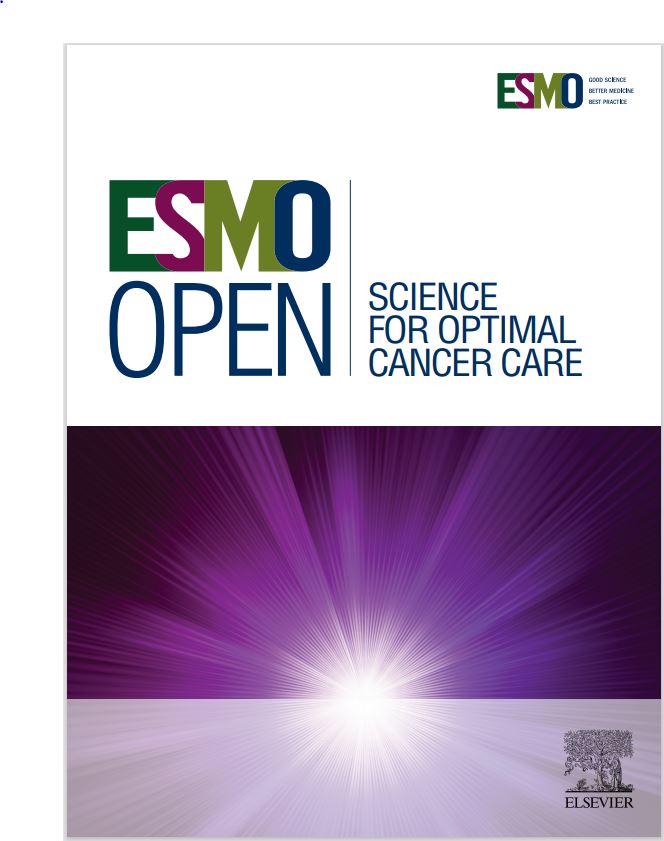Early detection, clinicopathological subtyping, and prognosis prediction for endometrial cancer patients using fragmentomics liquid biopsy assay
IF 8.3
2区 医学
Q1 ONCOLOGY
引用次数: 0
Abstract
Background
Endometrial cancer (EC) is among the most prevalent gynecological malignancies worldwide. This study explores the use of cell-free DNA (cfDNA) fragmentomics to develop a non-invasive liquid biopsy assay, aiming to improve early detection, subtyping, and prognostication of EC, thereby enhancing therapeutic outcomes and reducing associated mortality.
Materials and methods
A cohort of 120 patients with diagnosed EC and 120 healthy volunteers was used to develop a novel non-invasive liquid biopsy assay for EC. Five distinct fragmentomic features were analyzed from preoperative plasma samples using low-pass whole-genome sequencing. Ensemble models were created by integrating base models that utilized four different machine learning algorithms for early cancer detection, clinicopathological subtyping, and prediction of recurrence-free survival. An independent test cohort of 62 EC patients and 62 healthy controls was used to assess the final ensemble model’s performance.
Results
The liquid biopsy assay demonstrated high efficacy in early EC detection, achieving an area under the curve (AUC) of 0.96, with 75.8% sensitivity and 96.8% specificity in the independent test cohort. Consistent sensitivities were observed across EC stages I-IV at 74.4%, 85.7%, 75%, and 75%, respectively. The assay moderately predicted clinicopathological features including stage (AUC = 0.72), histological subtypes (AUC = 0.73), and microsatellite instability status (AUC = 0.77). The model also effectively predicted recurrence-free survival, identifying high-risk patients [hazard ratio (HR) 8.6, P < 0.001]. Additionally, similarity network fusion stratified patients into high- and low-risk clusters, with high-risk individuals exhibiting a notably increased recurrence risk (HR 6.2, P = 0.049). Patients identified as high-risk by both methods exhibited an even greater risk (HR 10.1, P < 0.0001) for recurrence.
Conclusions
This DECIPHER-UCEC-2 study (Detecting Early Cancer by Inspecting ctDNA Features) demonstrates that by integrating cfDNA fragmentomics with machine learning, our liquid biopsy assay shows significant promise for EC’s early detection, subtyping, and prognosis, potentially paving the way for enhanced patient outcomes.
碎片组学液体活检法对子宫内膜癌患者的早期检测、临床病理分型和预后预测
背景子宫内膜癌是世界范围内最常见的妇科恶性肿瘤之一。本研究探讨了使用游离DNA (cfDNA)片段组学来开发一种无创液体活检方法,旨在提高EC的早期检测、分型和预后,从而提高治疗效果并降低相关死亡率。材料与方法120名确诊的EC患者和120名健康志愿者组成了一个队列,研究了一种新的无创EC液体活检方法。使用低通全基因组测序分析术前血浆样本的五个不同片段组学特征。集成模型是通过整合使用四种不同机器学习算法的基础模型来创建的,这些模型用于早期癌症检测、临床病理亚型和无复发生存预测。采用62例EC患者和62名健康对照的独立测试队列来评估最终集成模型的性能。结果液体活检法在独立检测队列中具有较高的早期EC检测效率,曲线下面积(AUC)为0.96,灵敏度为75.8%,特异性为96.8%。在EC I-IV期观察到一致的敏感性分别为74.4%,85.7%,75%和75%。该方法可适度预测临床病理特征,包括分期(AUC = 0.72)、组织学亚型(AUC = 0.73)和微卫星不稳定状态(AUC = 0.77)。该模型还能有效预测无复发生存期,识别高危患者[风险比(HR) 8.6, P < 0.001]。此外,相似网络融合将患者分为高风险和低风险集群,高风险个体的复发风险显著增加(HR 6.2, P = 0.049)。两种方法确定的高危患者复发的风险更高(HR 10.1, P < 0.0001)。这项DECIPHER-UCEC-2研究(通过检测ctDNA特征来检测早期癌症)表明,通过将cfDNA片段组学与机器学习相结合,我们的液体活检技术在EC的早期检测、亚型分型和预后方面显示出巨大的前景,可能为改善患者的预后铺平道路。
本文章由计算机程序翻译,如有差异,请以英文原文为准。
求助全文
约1分钟内获得全文
求助全文
来源期刊

ESMO Open
Medicine-Oncology
CiteScore
11.70
自引率
2.70%
发文量
255
审稿时长
10 weeks
期刊介绍:
ESMO Open is the online-only, open access journal of the European Society for Medical Oncology (ESMO). It is a peer-reviewed publication dedicated to sharing high-quality medical research and educational materials from various fields of oncology. The journal specifically focuses on showcasing innovative clinical and translational cancer research.
ESMO Open aims to publish a wide range of research articles covering all aspects of oncology, including experimental studies, translational research, diagnostic advancements, and therapeutic approaches. The content of the journal includes original research articles, insightful reviews, thought-provoking editorials, and correspondence. Moreover, the journal warmly welcomes the submission of phase I trials and meta-analyses. It also showcases reviews from significant ESMO conferences and meetings, as well as publishes important position statements on behalf of ESMO.
Overall, ESMO Open offers a platform for scientists, clinicians, and researchers in the field of oncology to share their valuable insights and contribute to advancing the understanding and treatment of cancer. The journal serves as a source of up-to-date information and fosters collaboration within the oncology community.
 求助内容:
求助内容: 应助结果提醒方式:
应助结果提醒方式:


